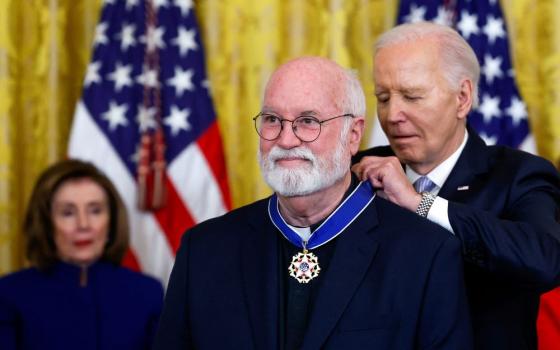RADICAL, RELIGIOUS, AND VIOLENT: THE NEW ECONOMICS OF TERRORISM
By Eli Berman
Published by MIT Press, $24.95
Wags will say that Eli Berman has written a study of religious terrorism with, well, the religion left out. Up to a point, Berman would agree, for he upends many popular notions in this highly readable book.
He asks: In what ways are they religious?
Think mutual aid activities (Amish barn raisings), and social prohibitions (such as severe dress codes or limits on secular education). More specifically, think “economic clubs,” for Berman’s analysis of what he calls the club model goes far in explaining a phenomenon that is underappreciated in the West: Hamas and Hezbollah sponsorship of vast networks of social services, such as schools, hospitals, food distribution, even garbage removal.
Some commentators describe such humanitarian services as mere fig leaves for these groups’ violent terrorist operations, but Hamas carried out its peaceful activities for 15 years before deciding to sponsor a militia. The “club model” helps to explain the relationship between these seemingly incompatible tasks.
The author’s model also helps to explain why militant radical religious organizations such as Hamas and Hezbollah often turn to suicide attacks. The issue is defections, which usually increase with such a strategy.
Berman contends that only a nearly defection-proof group, such as one following the “club model,” could maintain its organizational integrity while using suicide attackers. Because radical religious groups segregate their members from society and force them to prove their loyalty in myriad ways, this is where the mutual aid societies and dress codes come in. They cut down on the likelihood of opportunists or shirkers who could easily be induced to leave the group.
Thus, when Israel hardened its targets and ramped up its efforts to infiltrate terrorist organizations, making suicide bombings the only course of action, those groups could use them without collapsing.
As Berman succinctly puts it, such groups use suicide bombing because they can. This line of argument pounds home a broader claim: Those who use terror are rational actors. It’s a belief that’s commonly accepted by those who study terrorism but violates our society’s widely held belief that terrorists are “crazy.”
Berman, an economist at the University of California at San Diego, also counters the notion that the omnipresence of terrorism means it is an easily deployed tactic and is widely successful. In fact, he notes, most militant terrorist groups are incapable of sustained operations. In most cases, only those with radical religious roots are positioned to execute long-term campaigns of insurgency and/or terrorism. But, he emphasizes, most radical religious groups are nonviolent.
The author also presses some claims that are not so uniformly shared among terrorism experts. For example, analysts such as Peter Bergen have pointed out that the Sept. 11 hijackers and other prominent terrorists hailed from middle-class families, implying that there is not a direct link between terrorism and poverty.
But Berman’s emphasis on mutual aid societies as, under the right conditions, seedbeds for militant activity provides a new reason to look at the desperate search for economic security as a reliable predictor of terrorism. In the end, terrorism and insurgency can usually be reduced to tolerable levels only through the creation of political stability and economic opportunity. Thus nation-building is indeed central to counterterrorism/counterinsurgency, for without a stable government, economic development and the provision of secular social services are not possible.
Berman’s concluding chapter historically contextualizes the so-called economics of religion. Some will again protest the author’s willingness to analyze religion while paying minimal attention to theology. Yet such a line of inquiry yields startling insights, for instance, into the explosion of denominationalism during the Reformation and today’s rapid growth of radical religious belief. (Hint: It has something to do with modern market forces.)
Berman’s analysis is supported by an impressive array of quantitative data, much of it his own. Indeed, this book illustrates the most rewarding aspect of the social science approach, for it marshals numerical data to challenge myths and reveal surprising trends and links.
But his methodology has its problems, the most serious of which is his decision to measure a group’s effectiveness only by its lethality. Terrorists are concerned with more than just body counts. When, for example, Sunni radicals linked to al-Qaeda in Iraq bombed the al-Askari mosque in Samarra in 2006, they caused no human casualties by design. Rather, what they sought in damaging one of the most sacred of Shiite shrines was to inflame sectarian tensions to the point of civil war, and in this they succeeded. This reveals the broader blind spot in Berman’s approach: A terrorist’s stock in trade is subjective, theatrical, symbolic violence. How does one quantify that?
Another serious problem is that Berman’s analysis does not help explain the effectiveness of secular groups like Peru’s Shining Path or Sri Lanka’s Tamil Tigers.
Nonetheless, Berman’s book makes noteworthy contributions to the study of terrorism and religion and deserves to be read by all who are interested in those fields. We ignore his analysis and conclusions at our peril.
[Randall Law is the author of Terrorism: A History.]







